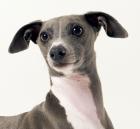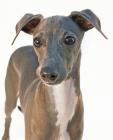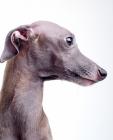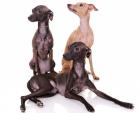Italian Greyhound
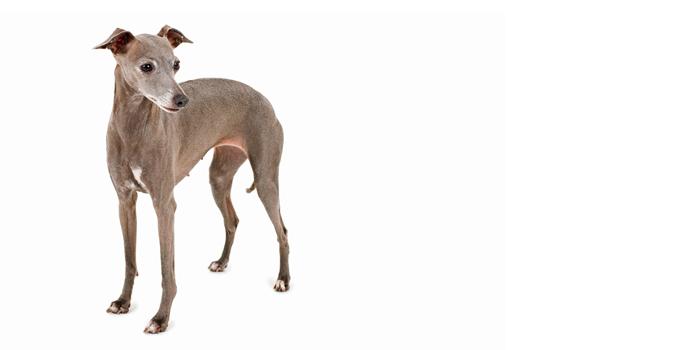
In my own words
I may be small but I’m as fast as lightening! I’m like a little rocket when I get going. I can run at 40 mph you know? Fancy a race? I bet you can’t keep up! Oh wait, it looks a bit cold outside, I think it might even rain. I’d really rather not go then, maybe we can race another day instead? I really hate to be outside in weather like this. Brrr!
I’m beginning to feel a bit of a chill now actually. Would you mind putting the jumper on me? Then I think I’ll go to bed. Unless you fancy cuddling in front of the fire with me? I’d really like that. Maybe the weather will be nicer tomorrow, but until then I think we should just stay at home all day.
My ideal owner(s)
Active people
Families with older children
Retirees
People with sedentary lifestyles
Quiet households
What they say about me
Fast
Lovable and affectionate
Loyal
Timid
Sweet and gentle
Please read on to find out more about me, and whether I’ll be someone you’ll be happy to live with for the next 12 to 15 years, or even longer!
Is this Italian Greyhound for you?
Test your knowledge about the Italian Greyhound
Information essential about the Italian Greyhound
Kennel Club Group:
Toy
Size:
Small: Weight Male 7 -14 lb (3 – 6kg) Female 7 -14 lb (3 – 6kg)
Height Male 13 – 14” (33 – 35 cm) Female 13 – 14” (33 – 35 cm)
Popularity:
The Italian Greyhound is a popular breed throughout its native Italy as well as in the UK and United States of America. It was one of the most popular breeds of dog in England during the Victorian era and is undergoing another surge of popularity in the modern day, as more and more people learn of its loving and affectionate temperament.
Breed History:
The Italian Greyhound is a truly ancient breed. There is a 6000 year old Egyptian tomb featuring an image of a dog which looks incredibly similar to the Italian Greyhound and they have been depicted across the Mediterranean in art work dating back 2000 years. A small dog appearing to be an Italian Greyhound was found in the lava flow of the partially buried ancient Roman city of Pompeii. There’s no denying that the beautiful Italian Greyhound breed has a long history behind it.
In the sixteenth century the Phoenicians brought the breed to Europe, where it was later developed by the Romans. The Italian Greyhound became a popular dog among European nobility during the renaissance, no doubt in part due to its elegant and refined features. The Italian Greyhound was loved by royalty for many years, with James I of England, Catherine the Great of Russia, Anne of Denmark and Queen Victoria all owning the breed. Perhaps the most dedicated royal to the breed was the Prussian King Frederick the Great who, in the 1700s, took his Italian Greyhound to war with him. When his beloved pet died, he buried it himself at the Sands Souci Palace. It was Frederick’s dying wish that he would be buried next to his Italian Greyhound on the 205th anniversary of his death, on 17 August 1991 and they are now both buried there together.
During the 1800s, it is reported that an African chieftain fell in love with Italian Greyhounds and offered 200 cattle for just one of the dogs. This goes to show just how lovable the breed can be.
Sadly, during World War I Italian Greyhounds came close to extinction in the UK, however they were already well established in America and due to careful breeding in the United States, they are now once again replenished in Britain.
Character:
Your Italian Greyhound is incredibly fast and can reach speeds of up to 40 miles per hour, but if you’re looking for a dog which will go running with you come rain or shine you might be surprised to hear that the Italian Greyhound might not be for you. Despite your Italian Greyhound’s speed and agility, he’s much happier inside next to a warm fire or staying snug in his bed, especially during winter. Their short, smooth coats and muscular little bodies mean that they really feel the cold and they hate to get wet. It can be tough getting your Italian Greyhound to go outside if it’s raining! Italian Greyhounds are commonly submissive dogs that are highly dependent on their owners and want nothing more than to keep you happy. They need constant reassurance that you are pleased with them and can become upset if they feel that you are angry or annoyed, so be careful not to raise your voice or speak in a harsh tone whilst training them. Your Italian Greyhound has a sensitive nature which makes him best suited to quiet households. He can become skittish if he’s stressed out. Keep your Italian Greyhound relaxed by showing him that you are in control and calm. It’s important not to baby an Italian Greyhound as it shows him that you are submissive to him and tells him he’s in control of the household, leading to unwanted behaviour.
Temperament:
The Italian Greyhound is the ultimate companion. They are lap dogs through and through and like nothing better than lying as close to you as they can manage. They are sweet, gentle natured dogs but can be timid so they do not do well in households with larger or more dominant dogs. Though your Italian Greyhound is incredibly affectionate, they are incredibly sensitive and often shy, so they are not well suited to families with young children, which your little Italian Greyhound may be fearful of. They will, however, love the company of older children who will not pester them or be too tough during playtime.
Conformation:
The Italian Greyhound is slender, elegant and poised. With a small, toy sized body, the breed shows a sleek, muscular frame with a sinewy appearance. The head should be long and narrow whilst being almost flat on top and the muzzle should taper to a point. The ears are small and folded, and the eyes are medium sized and very dark. The nose should be black or brown, depending on the colour of the Italian Greyhound’s coat. The teeth meet in a scissor bite. A long, arched neck should slope down to a broad deep chest and tucked in abdomen. The tail is slim with a slight curve and tapers to a point. The front legs are straight. Soft, glossy and satin-like, the coat consists of short and glossy, fine hair.
Colour:
The Italian Greyhound’s coat comes in almost all colours, including slate, grey, black, white, cream, red and fawn. They can also have markings on their chest and feet in white, for coloured dogs, or colour, for white dogs. A flecked coat also exists, though it is not recognised as breed standard in all countries.
Training:
The Italian Greyhound has a reputation for being difficult to train. This is due to the fact that they are often highly strung and incredibly sensitive, so they can become upset or stressed during training exercises. They can become incredibly timid if training is done in a harsh method, so consistent, reward based training is best suited to the breed. Obedience classes with a professional trainer are highly recommended to anyone getting an Italian Greyhound.
Care:
Looking for a dog which is easy to groom? With the Italian Greyhound, you’ve got one! The Italian Greyhound is a very low maintenance breed to groom. His shiny, soft coat only needs the occasional rub down with a soft towel, and bathing should take place only when absolutely necessary. Your Italian greyhound sheds very little hair. However, their fine coat makes Italian Greyhounds very sensitive to the cold, so their owners will often put a jumper on them to keep the chill off.
Health:
The average life expectancy of an Italian Greyhound is 12 to 15 years, however they have been known to live as long as 18 years. While adult Italian Greyhounds are fairly hardy, they are an incredibly fragile breed as puppies and can break or fracture a leg easily. It is therefore important to be careful with them, not let them jump down from sofas or other high surfaces, and to supervise them at all times until they are about 18 months old. The breed is also prone to epilepsy, slipped stifle and Progressive Retinal Atrophy. Buying from a reputable breeder will help you avoid these issues and get a happy, healthy pup
You may also like:
If you like Italian Greyhounds, you may be interested in breeds of the same size »
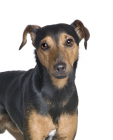
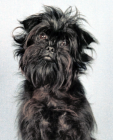



If you like Italian Greyhounds, you may like other breeds with similar characteristics »
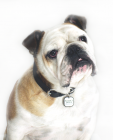
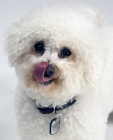
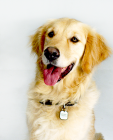
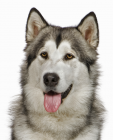

If you like Italian Greyhounds, you may be interested in these other toy dogs »



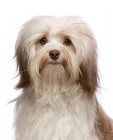
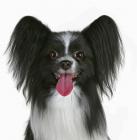
Advice on choosing your breed »
Find an animal shelter or rescue home where a Italian Greyhound is waiting for a new home »
The following grid gives a fast track review which covers all breeds. You can apply it to help you decide if an Italian Greyhound is suitable for you, the environment where you live, your personality and your lifestyle. On the grid, 1 = strongly disagree, and 5 = strongly agree. For example, if you are looking for a dog that is suitable for an apartment, look down the list under ‘environment’ and you will see that Italian Greyhounds are perfect for urban living, scoring 5. If you are looking for a dog that doesn’t shed much, look under ‘grooming’ and you’ll see an Italian Greyhound would be an excellent choice as they do not moult much, scoring 1. You might like to save or print off this section and keep it for reference while you check some other breeds before making your choice.
Be the first to rate this breed »
|
*PLEASE NOTE: All our breed profiles are general, and all dogs are individuals. Always talk to the breeders and meet the owners you are buying from. Try to meet the dog and its parents if it is a puppy in their home environment.








